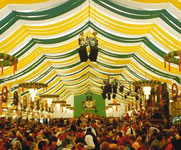
Exploring the history of the mighty House of Orange is both intriguing and rewarding. The "Oranje" cultural route runs for around 2,400 km right across Germany and the Netherlands, taking you on a fascinating journey of discovery through the history of the House of Orange right through to the present day. You will follow in the footsteps of the House of Orange-Nassau, one of the oldest and most famous dynasties in Europe. Its founders and ancestors, including those of the Dutch royal family, originally came from Hessen in the heart of Germany. Over the centuries, the House of Orange spread right across Europe, leaving a great legacy in its wake. A number of places in the Netherlands, Germany and also in other European countries stand as reminders of its political, cultural and social influence.

In light of the many different stages and places of interest, we recommend that you complete the Oranje Route in sections. Along the way, you can visit a number of impressive castles and palaces, housing exhibitions of art treasures and surrounded by fairytale gardens and parks. These grand homes were designed in keeping with their surroundings and placed in the most charming of settings. One of the finest examples of nature and culture in harmony, Schwerin's fantastic fairytale castle is set on an island in Lake Schwerin at the north-easterly point of the Oranje Route. Duke Heinrich zu Mecklenburg-Schwerin was born here in 1876, taking the centuries-old relationship with the House of Orange to a new level. In 1901, he married Queen Wilhelmina of the Netherlands, thereby becoming "Prince Hendrik of the Netherlands", grandfather of the currently reigning Queen Beatrix. A look at the cultural heritage of the House of Orange reveals a wealth of paintings, porcelain and jewellery. The collection also includes an impressive array of weaponry and buildings.








